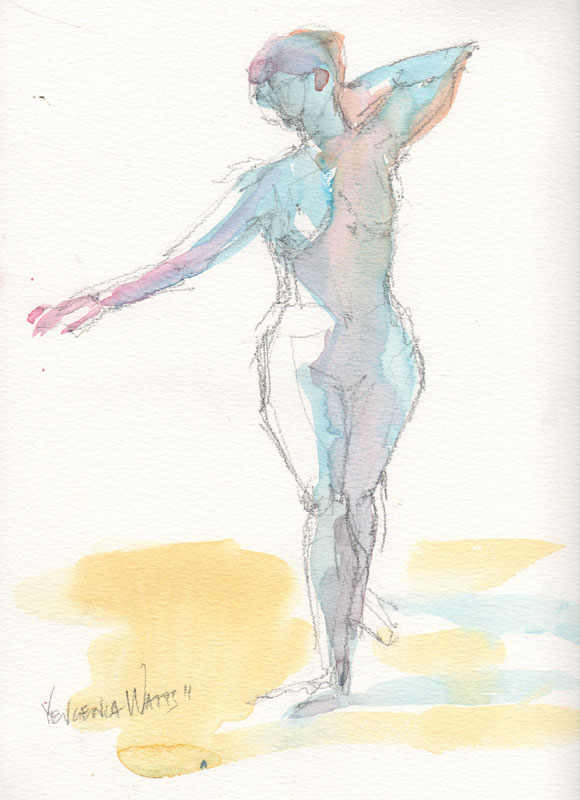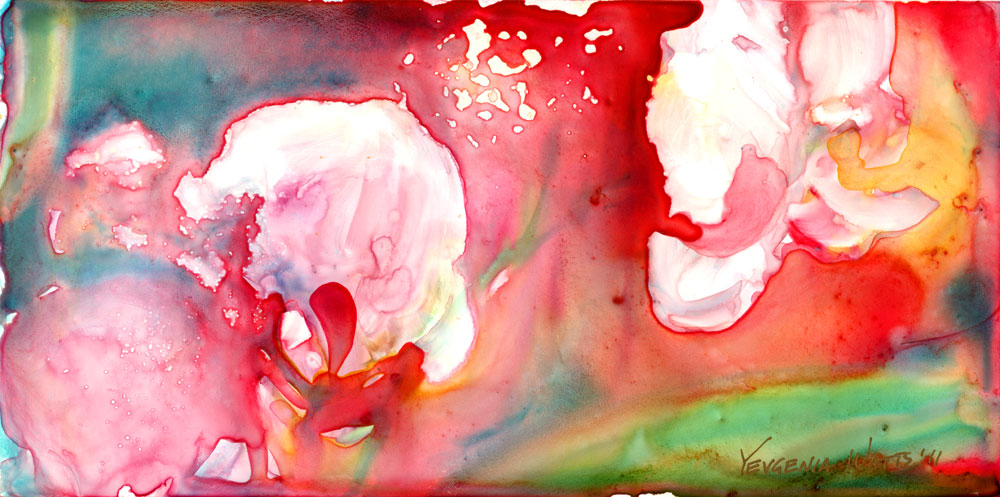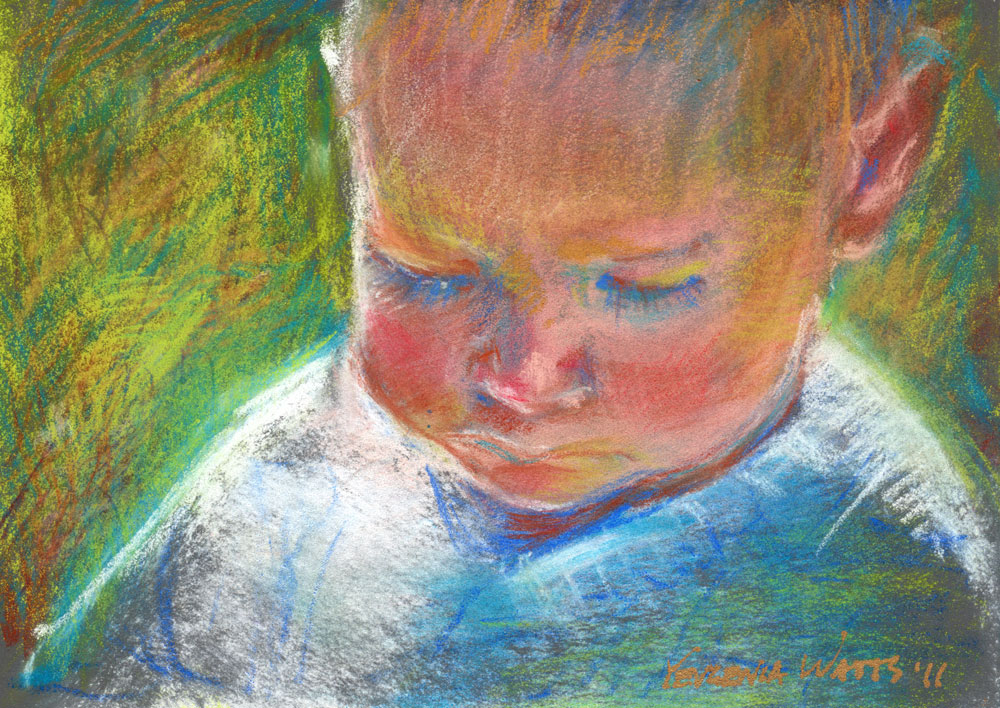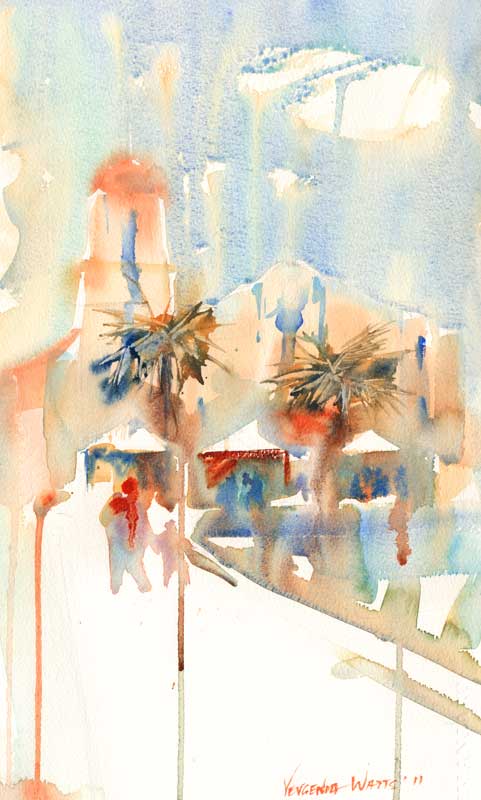 Oceanside is one of those things that I must confess I did not appreciate enough until I had to leave it. Going back there for two days of art fair was a treat (and getting a break from watching the ball of energy that is our son 24/7 was nice, too ;))! The show itself went ok - with gas and babysitter, we almost broke even. At least 50% of all the visitors at our booth were artists or art students. I was quite glad to explain my techniques and share my knowledge with them, along with receiving some tips back from them.
Oceanside is one of those things that I must confess I did not appreciate enough until I had to leave it. Going back there for two days of art fair was a treat (and getting a break from watching the ball of energy that is our son 24/7 was nice, too ;))! The show itself went ok - with gas and babysitter, we almost broke even. At least 50% of all the visitors at our booth were artists or art students. I was quite glad to explain my techniques and share my knowledge with them, along with receiving some tips back from them.
I met a couple of old friends and was amazed to learn that they follow my work and read my newsletters. It made me feel wonderful :) THANK YOU!
I also made many new contacts, including these fantastic artists:
Igor Koutsenko (who presented us with a poster of his woodcut Victory II, St. George on a motorcycle :))
Annie Aldrich (who lives in Big Bear Lake and makes amazing ceramics pieces that I was really hoping I would have made some money to spend on)
Catherine M.S. Cowles (who makes light fixtures to die for)
- and many more talented Southern Californians. It was worth it just for the opportunity to be there among all those creative people.
The painting above was done using a not-so-popular method of working from a black-and-white sketch made on location. The idea is for you to be there and experience the surroundings while making an abbreviated version of what you see. Your sketch, then, gives you a framework, a recorded idea that you interpret drawing from your memories and intuition rather than reproducing a photograph. This painting could have been much better, of course, but I like it :). Here is the sketch it was based on:

Just for comparison, here is a plein-air painting of the same church that I did in 2009. This one belongs to my "how not to paint in the future" bin.

And to complete your Oceanside experience, Decemberists :)
http://www.youtube.com/watch?v=2jjn-uoENPA&NR=1
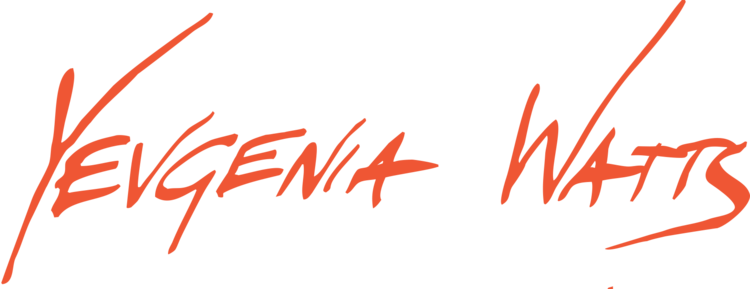















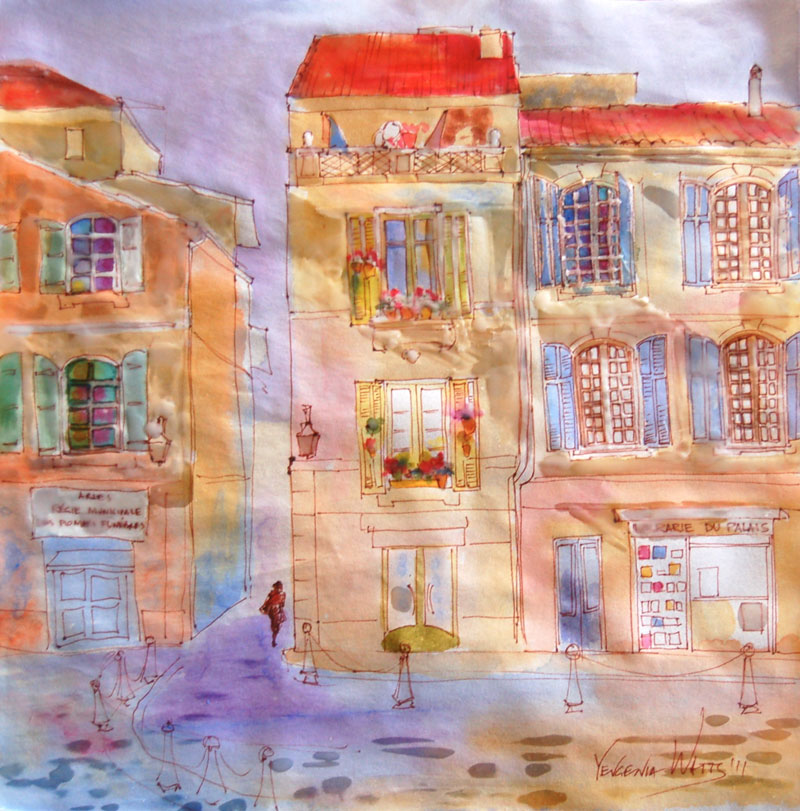








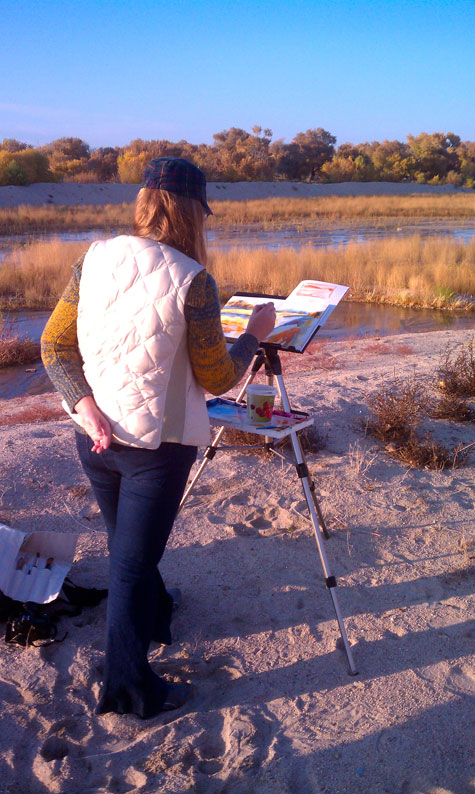

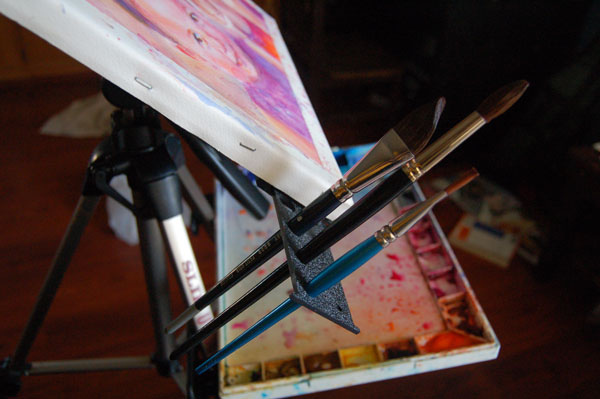
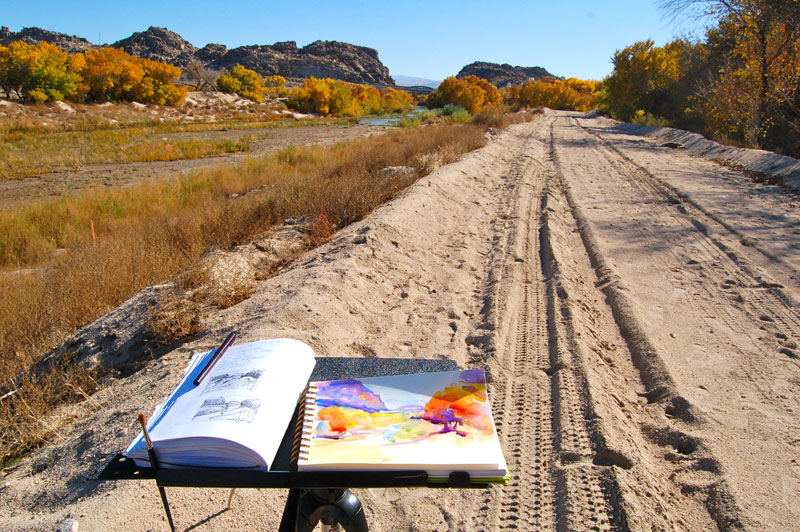
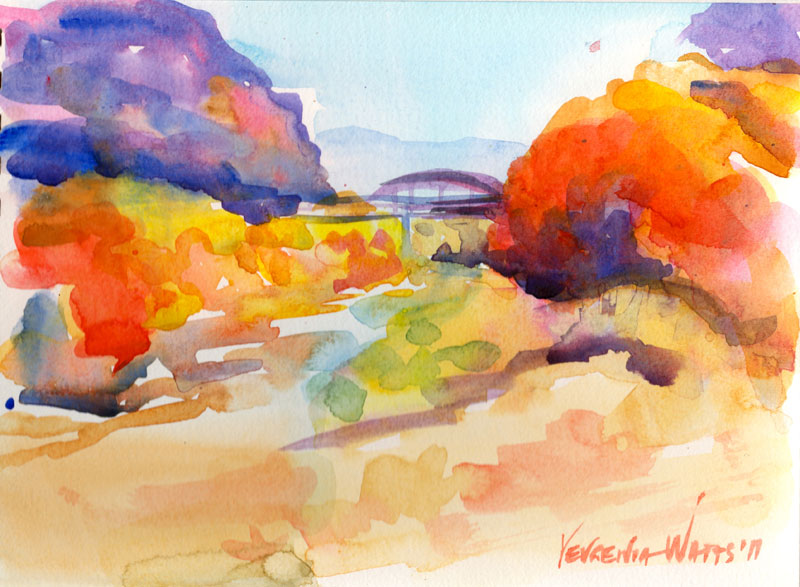
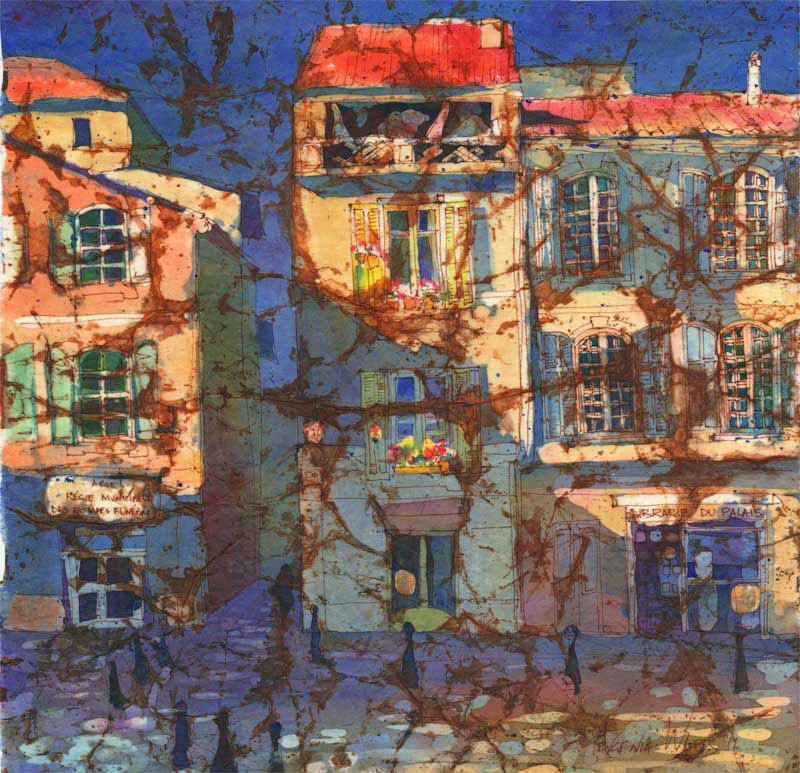
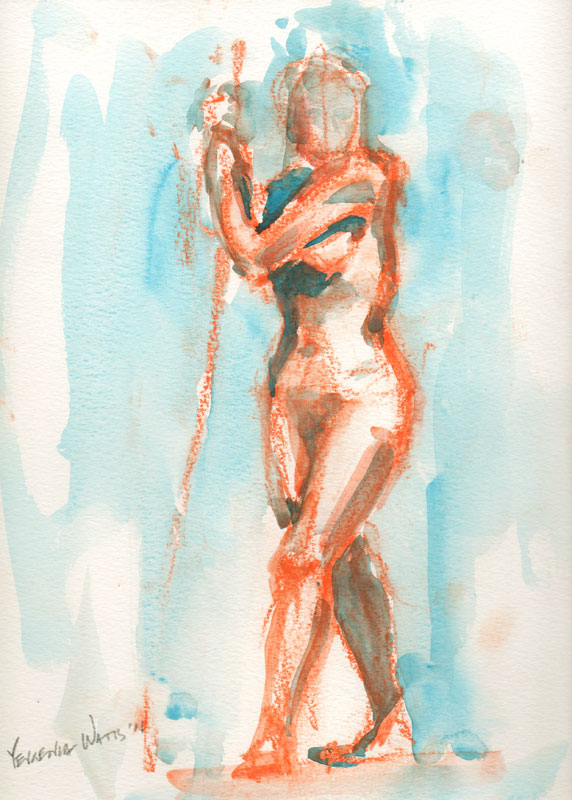
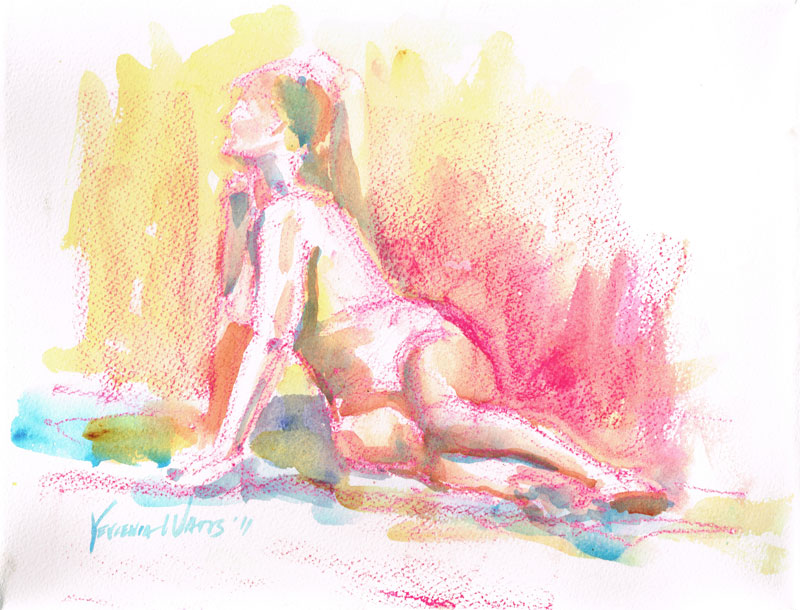


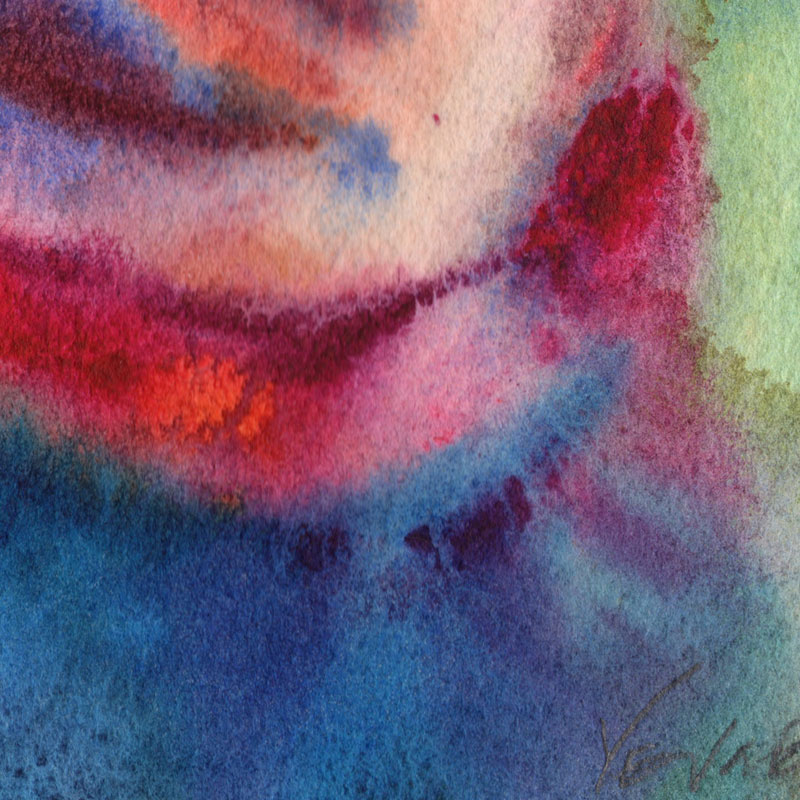
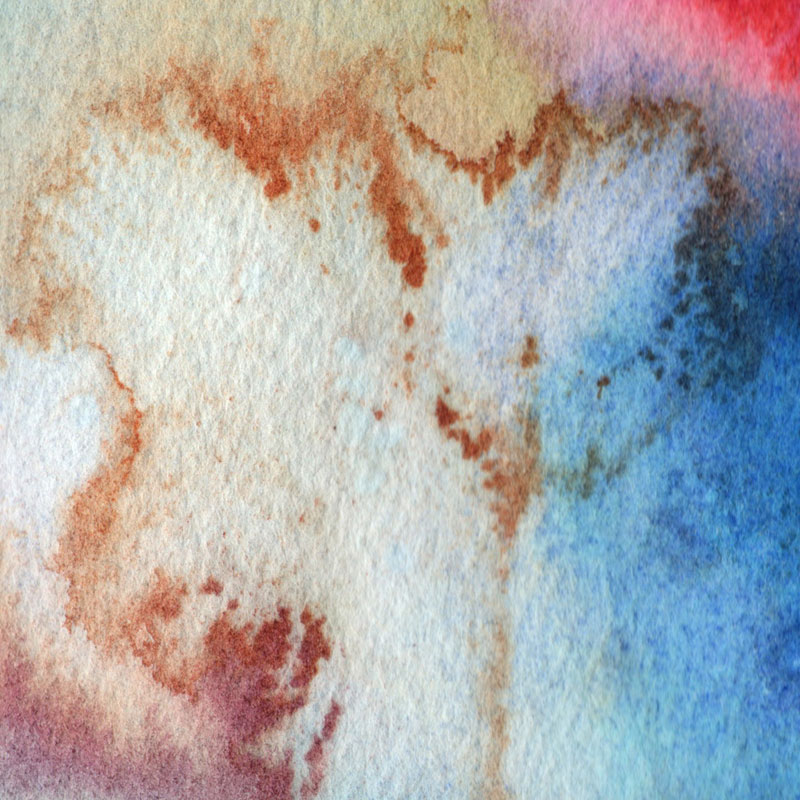

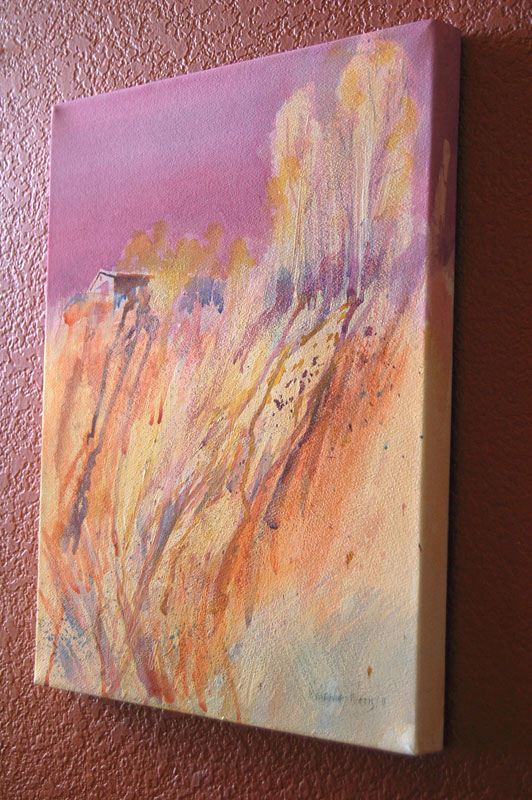
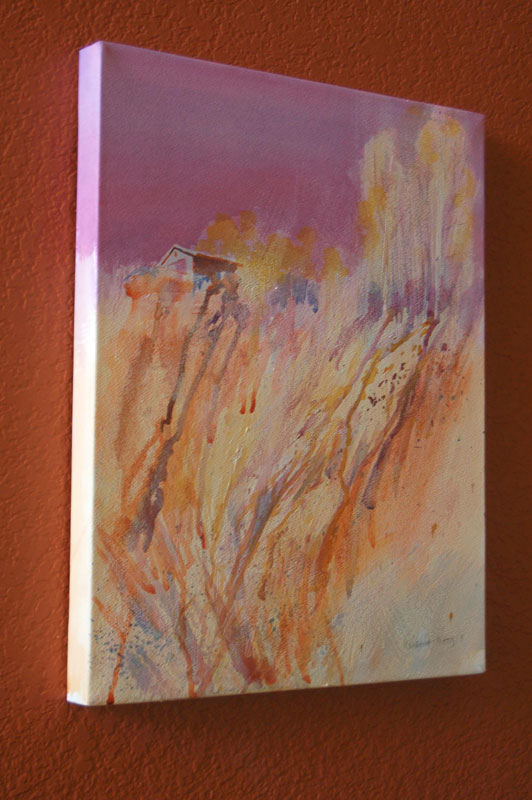
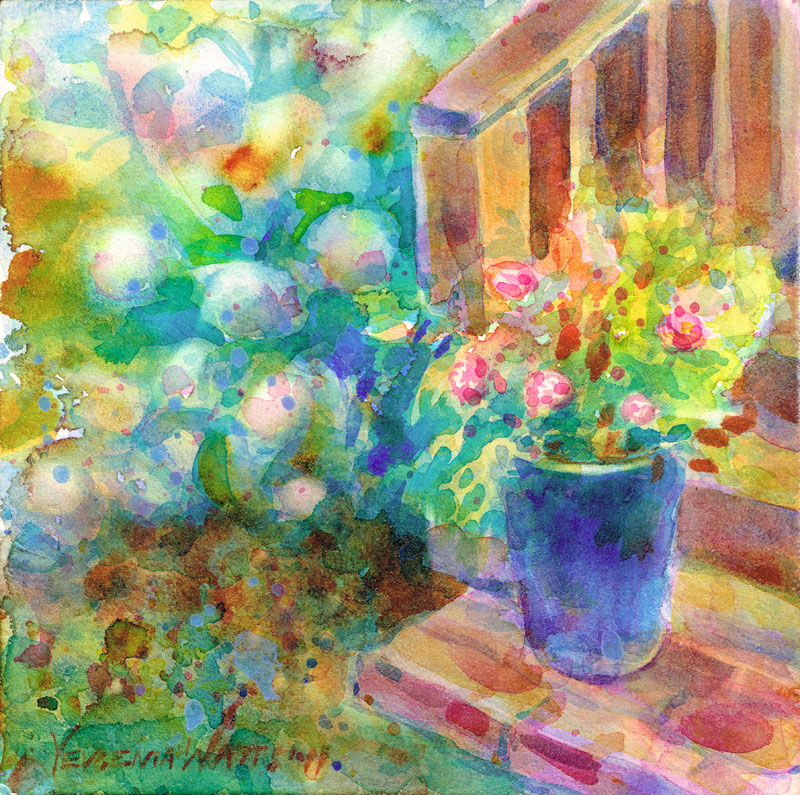
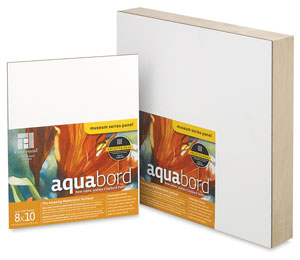






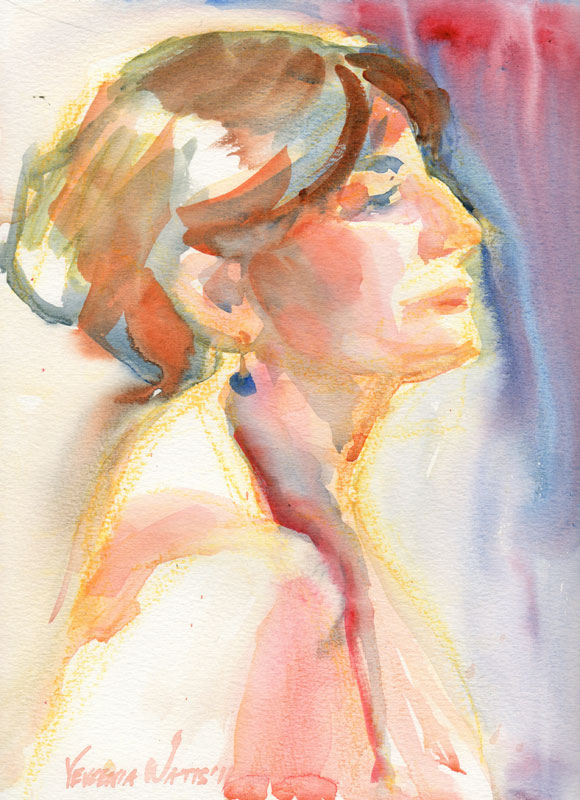 Julie is the beautiful model that I had the pleasure painting at the Sacramento Fine Arts Center during my trip to Sacramento. The watercolor above is a 15 or 20 minute painting. I did a very simple drawing with a yellow Nupastel and completed it with watercolor.
Julie is the beautiful model that I had the pleasure painting at the Sacramento Fine Arts Center during my trip to Sacramento. The watercolor above is a 15 or 20 minute painting. I did a very simple drawing with a yellow Nupastel and completed it with watercolor.